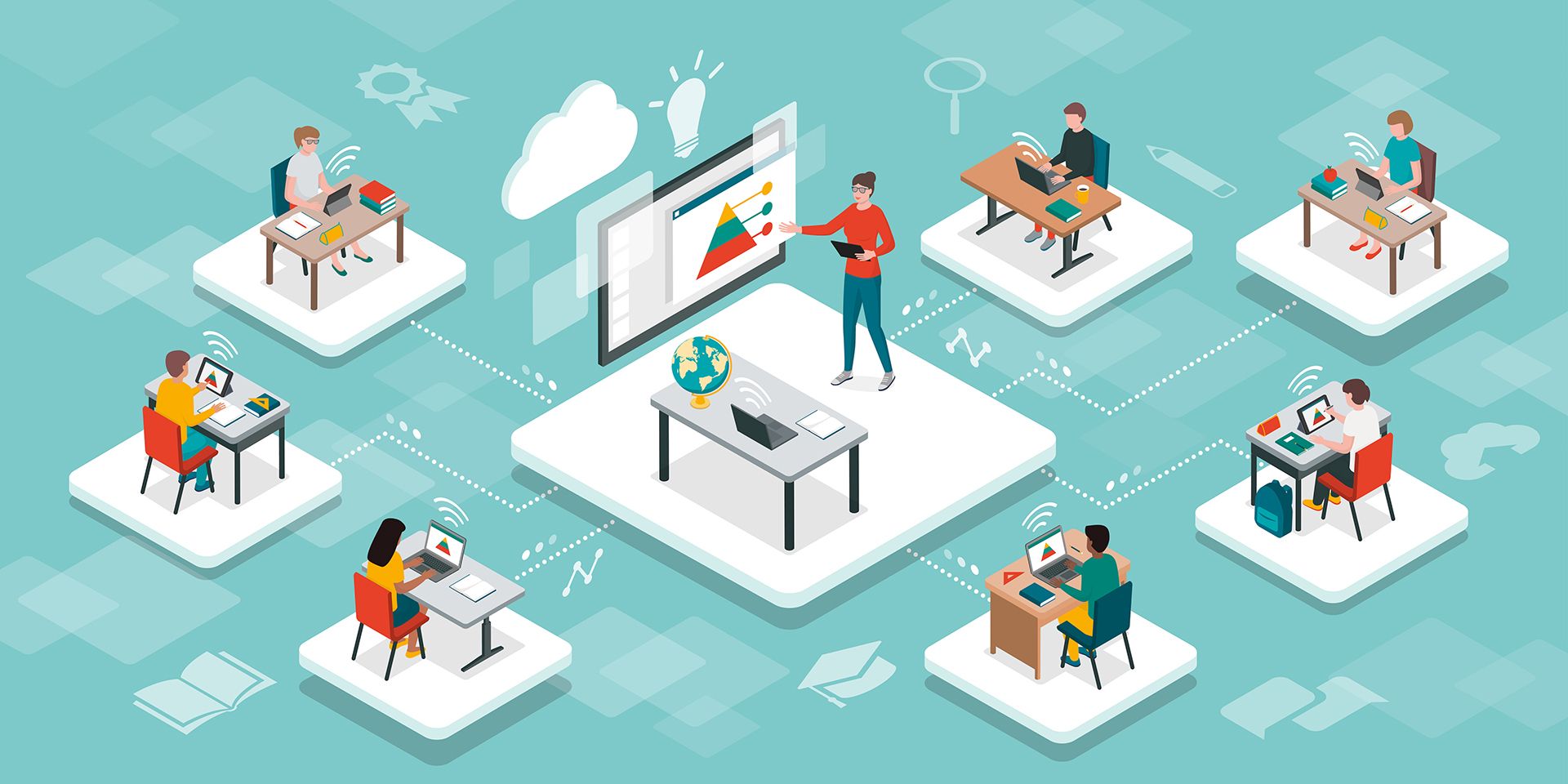Real-time learning vs. traditional training: which is the best method for your organization? We are currently in a skills gap where finding qualified employees is becoming more and more difficult. In a recent study by Monster, 85% of employers said that they are having significant difficulty finding qualified workers to fill positions in today’s market. Meanwhile, according to Delloitte, the skills gap is expected to leave an estimated 2.4 million positions unfilled by the year 2028. In light of these growing challenges, companies are looking for innovative ways to quickly and effectively train new employees while also advancing the skills of their current workforce.
In the pursuit of finding the best training methods, in-process learning approaches such as real-time learning are compared to past traditional training methods that mimic the school system. Within this line of thinking, 2 questions are often posed:
Should employees be trained at specific times prior to working or can training and instruction be an ongoing process in a real work environment?
Should training and work always be separate?
Finding the best way to advance the skills of your workers is highly dependent on the needs of your operation. Let’s explore the benefits of each methodology and see how you can empower your employees to perform more complex jobs, strengthen their knowledge retention, and create value sooner.
What is Real-Time Learning?

What if you could learn a new skill at the moment it was most essential? What if you could immediately acquire knowledge for a specific task regardless of previous training? This may sound like something out of “The Matrix” but it is the power of real-time learning.
As the name implies, real-time learning is the process of acquiring knowledge and guidance in real time. By using Industry 4.0 technology like work instruction software, employees can actively work on the shop floor and learn new skills simultaneously. The system guides workers through every step of the procedure while monitoring quality and productivity.
Real-time learning enables people to acquire knowledge on demand while immediately creating value.
Unlike traditional modes of education, real-time learning takes a segmented approach to knowledge discovery. Instead of working through a training curriculum with a specific order, workers access the training and work instructions specific to their tasks. This enables a fast and agile knowledge distribution method that molds to the needs of your operation and your business.
As discussed in The Connected Worker Platform and the New Connected Economy, work instruction software and real-time learning present useful advantages for mixed-model manufacturing where production is based on the ever-changing demand of the market.
Within a mixed model environment, some processes are repeatedly performed while others may not be repeated for months on end. With hundreds of different procedures being performed at irregular intervals, it is unreasonable to expect that every worker knows each process by heart. To combat this issue, manufacturers are increasingly using work instruction software to guide and retrain workers simultaneously. No matter how long it’s been since certain processes have been performed, every employee is able to perform any process
The power of real-time learning is its long-lasting ability to transmit pertinent information at the right time and in the right place.
Real-Time Equals Real Place

Much like the philosophy behind the Gemba Walk, real-time learning seeks to take advantage of going to the real place and gaining hands-on experience.
When we look at traditional learning methods, the student is removed from where real work is performed. And there is a specific reason for this. The idea is to provide a safe place for people to learn the skills apart from the real work environment. The downside is that the quality of the learning experience is diminished because it doesn’t prepare workers for the real manufacturing environment. All too often, workers forget what they’ve learned in the classroom and are required to learn everything twice. This leads to them potentially picking up bad habits once they are working/retraining on the shop floor.
For this reason, training needs to be supplemented by experience on the shop floor. With real-time learning, employees gain this experience within the real work environment; strengthening the learning experience and enhancing employees’ knowledge retention. This method enables training to closely, if not exactly, resemble their future tasks and responsibilities.
The 4 Advantages of Real-Time Learning for Companies
The focus of real-time learning is the enhancement of employees’ capabilities and performance. But it also presents four key advantages specific to the organization.
- Job-specific training:
Real-time learning transforms how you distribute knowledge to your employees. Instead of workers learning in a strict sequential order, employers can supply specific knowledge at the time it is needed. This means that training is agile and flexible to the needs of the operation and does not rely on what an employee already knows.
Imagine that you run a cardboard box factory and your most experienced cutter just called in sick. Not a problem! The knowledge, experience, and best practices of your employees are captured in your work instruction software. You call another operator from another line and put them on the cardboard cutting machine. They follow the instructions and your process runs as it should - with no hiccups. In fact, this is a real-life example as Induspac improved process accuracy and training by switching to VKS!
Additionally, you’ve now cross-trained your employee based on the needs of your operation.
- Training that enhances productivity:
Often training can put a halt on productivity as it involves multiple people and time spent away from production. Generally, an experienced employee will need to leave their post and focus on training the new employee. And though training employees is an important part of any business, the company is now paying two employees while less value is being created.
But with real-time learning, employees that have little to no prior training can create value from the get-go. They simply need to follow the standardized work instructions. As they are performing their work, VKS is effectively guiding and training the new employee without cutting into the productivity of the operation. In this way, training does not impede productivity but actually enhances it.

Pro Tip: Help new employees by creating specific guidebooks or links to other materials. This will help new employees gain more information as you can outline specific steps in greater detail without adding more steps to your standard guidebooks. You can also use Expert Mode Access to allow senior operators skip steps that are needed for employees with less experience.
- Increased standardization for every worker:
Real-time learning applications enhance the reliability and quality output of every process through standardization. It ensures that training and process guidance is being performed the same way every time for every employee. Also, as experienced and inexperienced employees follow and perform their work, our work instruction software is monitoring that the job is being done according to the standardized method.
- Continuous Improvement made simple:
Real-time learning creates a fast and effective way to implement continuous improvement across your shop floor. With work instruction software giving every employee the most up-to-date guides, training employees on new and advanced procedures is done with the click of a button. Employees are notified when changes have been made and the system guides them through the improved process.
How to Bring Traditional Training to The Next Generation

Within the era of Industry 4.0 and the amazing benefits of real-time learning, it may seem that there is little space for traditional training methods. But this cannot be farther from the truth. The classroom setting is a great place to cement in the company vision, best practices, and any knowledge that may not be directly tied to any one procedure.
But despite the contemporary relevance of traditional training methods, they can certainly be improved through modernization and Industry 4.0 technology. Much like other industrial methods, traditional training methods are in need of innovation.
With work instruction software, classroom training can be remodeled into an interactive e-learning experience. Instead of hearing someone explain a process with a PowerPoint presentation (or worse, no visuals at all), workers can interactively follow along with the work instruction guidebook away from the shop floor. Instructors share the screens of the trainees and the whole class works together to learn and solve problems in a safe and stress-free environment.
Essentially, we can apply some of the qualities of real-time learning to the classroom with an interactive platform. This greatly enhances the learning experience and knowledge retention of each employee when classroom training is needed.
How our Customers are Using Real-Time Learning & Classroom E-Learning
Some of our customers have opted to implement both training methods; combining interactive e-learning in the classroom with real-time learning on the job. And this has brought some impressive results.
“With VKS, we’ve been able to cut our training time in half. We went from a two-month training program to a one-month program. This has been a huge asset for our training and will continue to be a huge asset as we move forward.”
George Englis, Manager of Operational Training
By combining both interactive e-learning and real-time learning methods, George Englis and his team at Chesterton have been able to streamline their employees’ training times while actively increasing knowledge retention and training quality.
At Chesterton, employees are first trained in an intelligent e-learning classroom setting where they progress through their various guidebooks. As the trainees develop their skills and knowledge, they move out to the shop floor and begin real-time learning at a work-bench. This gives them incredible experience while giving them the opportunity to create value sooner than normally possible.
Seize the Advantages of Both with VKS
At VKS, we believe in the unique needs of our customers. Whether you need to train large groups in a classroom or guide individual employees through new procedures, our goal is to empower your workers and your operation at every step of the way.
Real-time learning is taking the manufacturing world by storm, yet classroom sessions for learning the basics are still worthwhile. There is no doubt that both real-time learning and traditional training methods are needed for the vast landscape that is modern manufacturing.
With work instruction software, intelligently tailor your training methods to suit the specific need of your operation. This strengthens the whole workforce and enables your employees to learn new skills, maintain confidence, build quality, and immediately create value.




